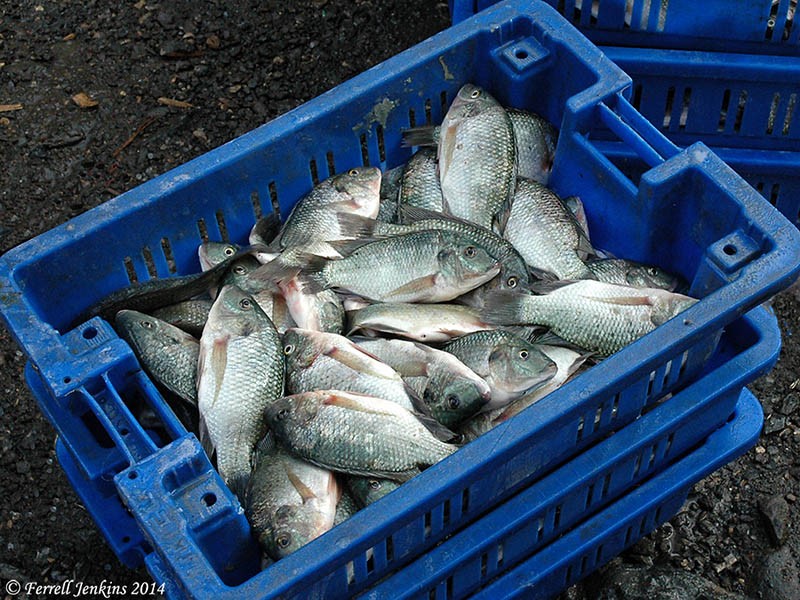

They mix well with non-territorial cichlids, large catfish, tinfoil barbs, garpike, and other big but peaceful fish.Īlthough their meat is somewhat bland compared with cod, salmon, or sea bass, Tilapia are a good source of protein and have been assimilated into the cuisines of many countries. They can also be somewhat aggressive or boisterous, and so need to be kept with other hardy and robust fish. Most of the species are substrate spawners but some are mouthbrooders. They breed easily and grow fast, but are a danger to any smaller fish. Tilapia are easy to keep in aquariums provided they get enough space. In many places, particularly Florida and Australia, feral populations of Tilapia have had detrimental effects on ecosystems. Because Tilapia are large, fast growing, highly fecund, and tolerate a wide variety of water conditions (even marine conditions), once introduced into a habitat they generally establish themselves very quickly. More often, however, the fish have been introduced deliberately for artisinal or industrial scale aquaculture. Some introductions, as in Florida and Texas, were unplanned, often by aquarium specimens being released by their owners after the fish grew too large. But Tilapia species have been introduced widely into tropical fresh and brackish waters around the world. Tilapia species are native to Africa and the Levant (for example the sea of Galilee, where according to legend Jesus used it to feed the 5000, resulting in the nickname St. Each subdivision is identified by an eight-digit numerical code.Tilapia is a genus of freshwater fish in the cichlidae family. The scheme is based on the Harmonized System nomenclature, further extended with Community subdivisions. Sarotherodon galilaeus (Linnaeus, 1758)Īn annually revised goods classification scheme used in EU for the purposes of customs duty and foreign trade statistics. Tilapia galilaea galilaea (Linnaeus, 1758).Sarotherodon galilaeus galilaeus (Linnaeus, 1758).Sarotherodon multifasciatus (Günther, 1903).Sarotherodon galilaeus sanagaensis (Thys van den Audenaerde, 1966).Sarotherodon galilaeus multifasciatus (Günther, 1903).Tilapia galilaea borkuana Pellegrin, 1919.Tilapia sanagaensis Thys van den Audenaerde, 1966.Tilapia galilaea boulengeri Pellegrin, 1903.Tilapia galilaea pleuromelas Duméril, 1861.Tilapia galilaea multifasciata (Günther, 1903).Sarotherodon galilaeus borkuanus (Pellegrin, 1919).Sarotherodon galilaeus boulengeri (Pellegrin, 1903).Sarotherodon sanagaensis (Thys van den Audenaerde, 1966).Sarotherodon galilaeum (Linnaeus, 1758).Young individuals: silvery, with some narrow black cross bars on sides fins greyish, upper margin of dorsal fin rosy red-edged (Ref. 53405).Ĭoloration: in life: Adults: sides and fins light silvery-grey belly white (Ref. Micro-gillrakers present scales cycloid (Ref. Ventral keel elongate, longer than dentigerous plate (Ref. Pharyngeal teeth numerous and very small (Ref. 53405, 81260), inner jaw teeth tricuspid, posterior teeth on pharyngeal jaw bicuspid (Ref. 2).ĭescription: 4-8 rows of teeth in oral jaws (Ref. Caudal fin naked except at base melanin patches only in occasional individuals, not populations reproductive individuals greyish dorsally, silvery ventrally margin of dorsal and caudal fins pinkish pectoral usually extending to above vent or spinous anal fin males with longer soft dorsal and anal fin-rays (Ref. 27-30 total dorsal-fin rays (average 28-29) body depth 43.0-56.5% SL (usually over 45%) length of pectoral fins 36.0-50.0% SL interorbital space 36.0-44.0% HL (Ref. Upper profile of snout straight or slightly arched (Ref. Diagnosis: 20-27 rakers on lower limb of first arch length of lower pharyngeal jaw 2-3 times in keel length (Ref.


 0 kommentar(er)
0 kommentar(er)
